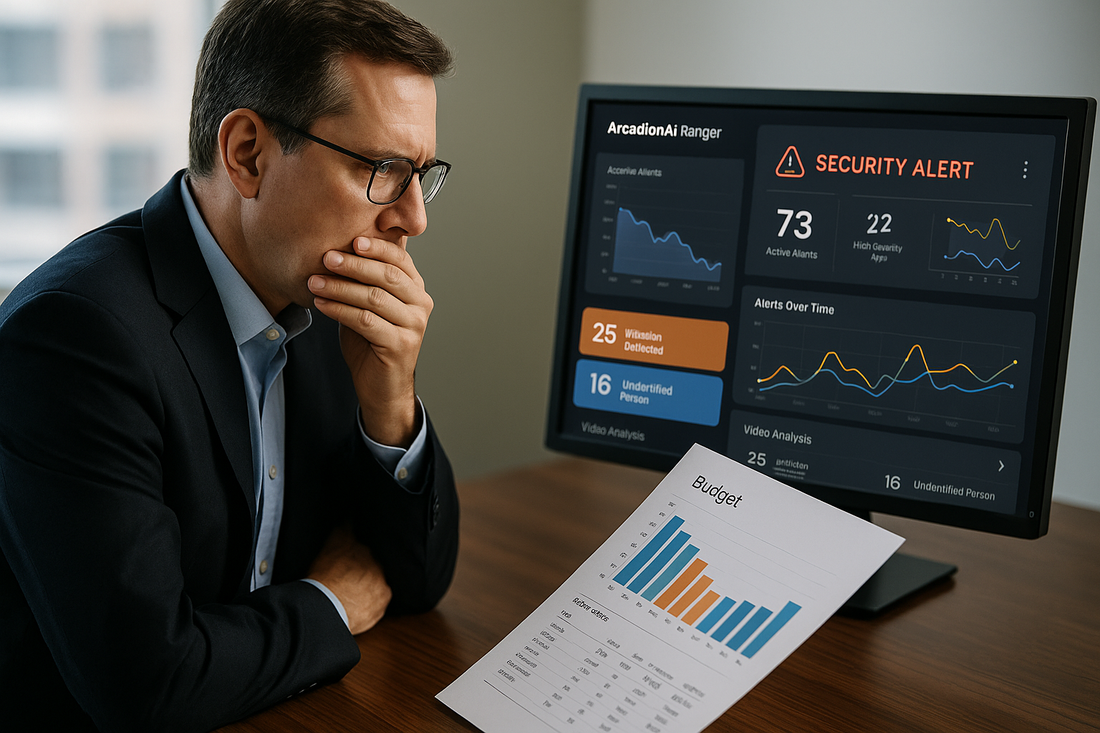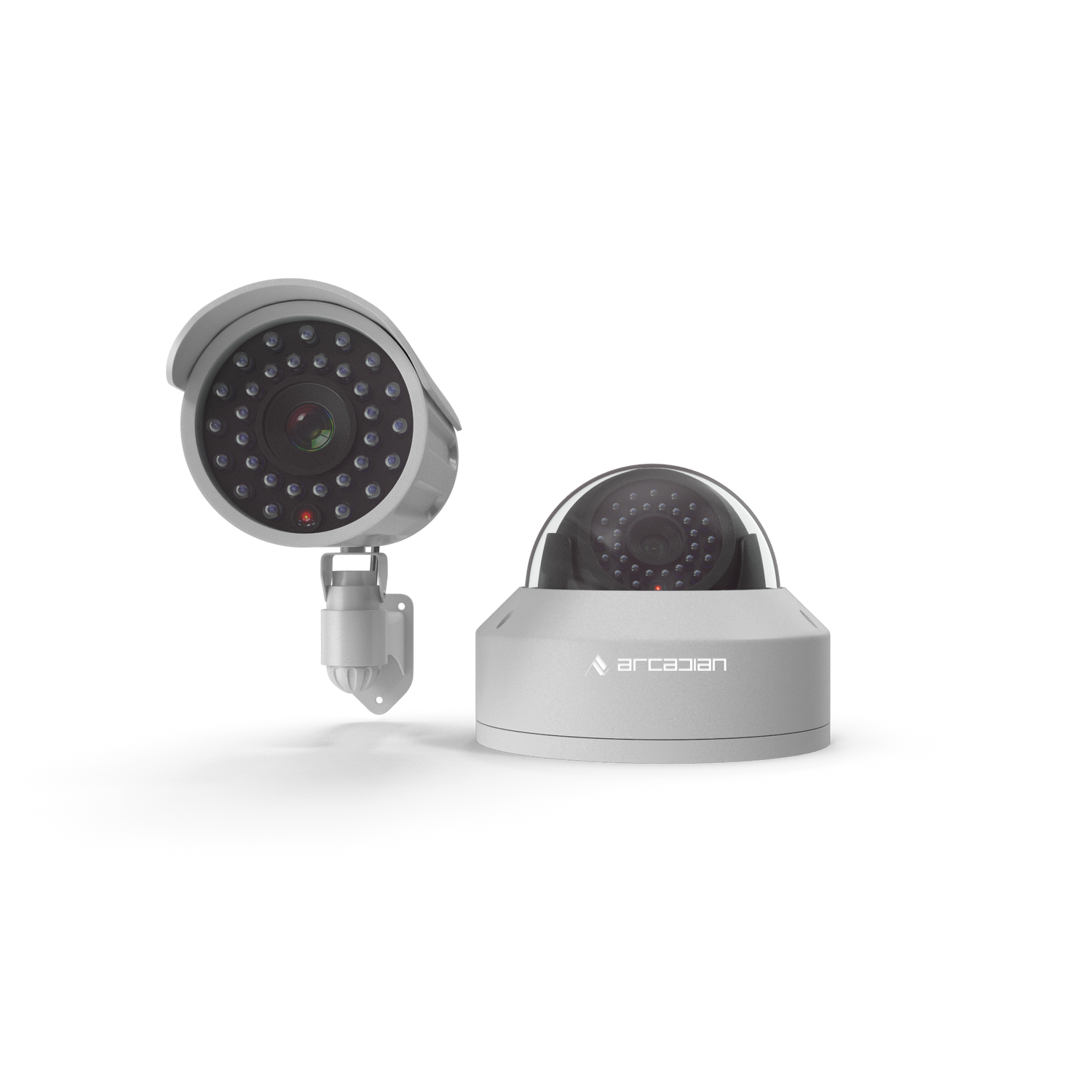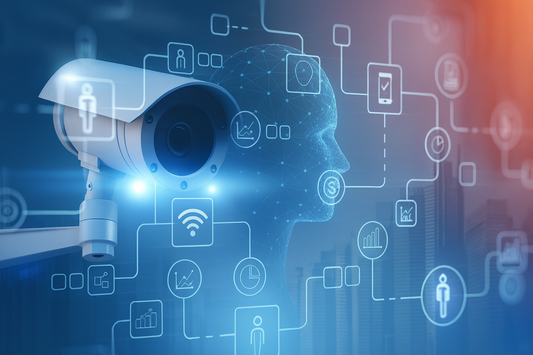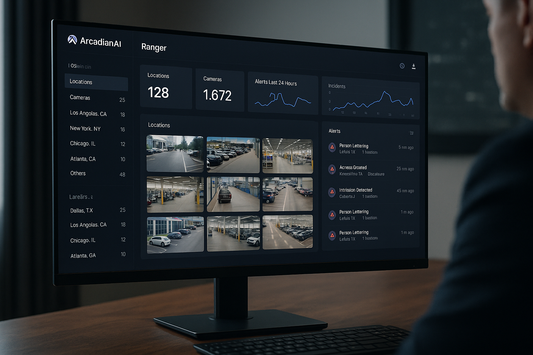The High Price of Cutting Corners: Why “Saving” on Security Will Cost You Everything
Budgets are tight, but disasters are expensive. Here’s how psychology tricks us into under-spending on security—and why the smartest organizations are flipping the script.

Introduction
In 2023, three Lululemon stores in the U.S. experienced coordinated smash-and-grab attacks within 48 hours. Total merchandise loss: over $500,000. Annual store security budget: under $50,000. That’s a 10x loss—and those figures don’t even include lost sales, shaken staff, and long-term brand damage.
ArcadianAI knows this pattern all too well. In retail, manufacturing, healthcare, education, and critical infrastructure, the same story repeats: we think we’re saving money by avoiding “unnecessary” security expenses… until a disaster proves we were just paying later, at a much higher price.
And yet—despite knowing the risks—we humans are wired to undervalue prevention. Competitors like Verkada, Eagle Eye Networks, Genetec, Hanwha, and Axis all promise to reduce your risks, but most organizations still treat security as a “grudge purchase.” It’s psychology, not logic.
This post will expose the mental traps that keep decision-makers from investing in adequate AI + physical security, backed by real-world examples. Then we’ll show how ArcadianAI’s Ranger platform turns a limited budget into maximum protection.
Quick Summary / Key Takeaways
-
Loss aversion bias: We fear spending now more than losing later.
-
Normalcy bias: We assume “it won’t happen here”—until it does.
-
Budget myopia: Cutting prevention budgets costs more long term.
-
Real incidents prove under-spending is more expensive than investing.
-
ArcadianAI Ranger maximizes every dollar for smarter security.
Background & Relevance
Why talk about this now? Two reasons:
-
Rising Threats — According to the FBI, retail theft losses topped $112 billion in 2023, up 19% year-over-year. Cyber-physical attacks on infrastructure have doubled since 2021.
-
Economic Pressure — Inflation, supply chain instability, and tighter budgets mean organizations are prioritizing cost-cutting. Security is often first on the chopping block.
The danger: When threats are rising and protection is being cut, risk exposure multiplies. This is when criminals—both physical and cyber—see their opening.
Core Topic Exploration
1. The Psychology of Security Cost Avoidance
Humans are notoriously bad at valuing prevention. Three major biases explain it:
-
Loss Aversion — We dislike losing money right now more than we fear bigger future losses.
-
Normalcy Bias — We believe bad events are rare and unlikely to happen to us.
-
Optimism Bias — We assume if nothing bad has happened yet, nothing bad will happen soon.
These biases explain why a school will spend $20,000 on sports equipment without hesitation but balk at a $15,000 AI camera upgrade—despite the fact that a single security incident could cost millions in lawsuits.
2. Real-World Case Studies
Retail: Lululemon & Organized Crime
In May 2023, three Lululemon stores in Atlanta were hit by coordinated thefts. Video from existing cameras was too low-quality for identification. Police couldn’t make arrests. Losses exceeded $500,000. Security upgrades would have cost less than 10% of that.
Infrastructure: Colonial Pipeline Ransomware (2022)
While technically a cyberattack, physical access and weak monitoring of systems played a role. Shutdown costs: $4.4 million ransom + hundreds of millions in lost economic activity.
Education: Parkland School Shooting (2018)
Post-event analysis revealed $2 million in unspent security budget in the two years prior. Delays in implementing AI-based threat detection systems cost lives.
3. Competitor Gaps & Misplaced Priorities
Verkada, Eagle Eye Networks, Hanwha, Genetec, Axis, and Milestone all provide quality solutions—but many customers overspend on features they don’t need while underspending on basics they do. The result: impressive dashboards, poor actual security outcomes.
ArcadianAI Ranger is different: it’s camera-agnostic, budget-adaptive, and built for ROI-based prioritization—meaning we focus every dollar where it reduces the most risk.
4. The Math of Security Budgeting
Let’s break down an example for a 10-location retail chain:
| Expense Type | Annual Cost | Incident Loss Potential | ROI in Prevention |
|---|---|---|---|
| Security Cameras Only | $25,000 | $500,000+ | Low |
| AI-Enhanced Surveillance (ArcadianAI) | $40,000 | $500,000+ | High |
| No Upgrade | $0 | $500,000+ | Negative |
The question isn’t “Can we afford it?”—it’s “Can we afford NOT to?”
5. The Reverse Psychology Argument
If you’re confident your store will never be robbed, your warehouse never vandalized, your staff never assaulted—then yes, skip security upgrades. After all, why waste money on something that will definitely never happen, right?
But if you’re wrong—even once—you’re not just paying in cash. You’re paying in customer trust, staff morale, insurance premiums, lawsuits, and sometimes, human lives.
Comparisons & Use Cases
ArcadianAI vs Traditional Approaches
| Feature | ArcadianAI Ranger | NVR/VMS Competitors |
|---|---|---|
| AI-Powered Threat Detection | ✅ | Limited / Add-on |
| Camera-Agnostic | ✅ | Often Locked to Brand |
| Budget ROI Optimization | ✅ | ❌ |
| Multi-Site Risk Dashboard | ✅ | Partial |
| Cloud + Edge Hybrid | ✅ | Limited |
| Compliance Ready (NDAA, GDPR) | ✅ | Varies |
Use Cases:
-
Retail Chains — Reduce shrink and increase response speed.
-
Education — Early detection of threats and suspicious behavior.
-
Critical Infrastructure — Continuous monitoring with AI anomaly detection.
-
Manufacturing & Logistics — Protect high-value assets and ensure compliance.
Common Questions (FAQ)
Q1: Isn’t AI security too expensive for small businesses?
No—ArcadianAI Ranger scales costs to your budget and maximizes ROI.
Q2: How fast does AI security pay for itself?
Often after a single prevented incident.
Q3: What if we already have cameras?
Ranger works with existing cameras—no need for total replacement.
Q4: Does AI replace human guards?
No—it enhances them, reducing missed events and false alarms.
Q5: Is this just for retail?
No—ArcadianAI is deployed in retail, education, manufacturing, healthcare, and critical infrastructure.
Conclusion & CTA
Security isn’t a luxury—it’s an investment. The cost of doing nothing is always higher than the cost of prevention. The smartest organizations in 2025 aren’t asking, “Can we afford security?” They’re asking, “How can we afford to be without it?”
See ArcadianAI in Action → Get Demo – ArcadianAI
Security Glossary (2025 Edition)
AI Surveillance — Use of artificial intelligence to monitor, detect, and analyze security footage in real time.
ArcadianAI Ranger — Cloud-native, camera-agnostic AI surveillance platform optimizing budget allocation and threat detection.
Budget Myopia — Short-term budget decisions that ignore long-term cost implications.
Loss Aversion — Psychological bias where people fear immediate losses more than future losses.
Normalcy Bias — Underestimating the likelihood of disasters because they haven’t happened before.
NDAA Compliance — U.S. legal requirement restricting use of certain foreign-made security equipment.
NVR (Network Video Recorder) — On-premises device for recording and storing video footage from security cameras.
Physical Security — Protection of people, property, and assets from physical threats.
ROI (Return on Investment) — Measurement of the value gained compared to the cost spent.
Shrink — Retail industry term for loss of inventory due to theft, fraud, or error.
Threat Detection — Process of identifying and responding to potential security risks.
VMS (Video Management System) — Software for managing video feeds and recordings from multiple cameras.
VSaaS (Video Surveillance as a Service) — Cloud-based video monitoring solution where storage, analytics, and management are remote.
Verkada — Competitor offering cloud-based security cameras and software.
Eagle Eye Networks — Competitor providing cloud-based VMS solutions.
Genetec — Competitor offering enterprise VMS and security solutions.
Hanwha Vision — Camera manufacturer known for robust hardware with analytics capabilities.
Axis Communications — Global camera manufacturer specializing in IP-based surveillance.
Milestone Systems — VMS provider known for large-scale enterprise deployments.

Security is like insurance—until you need it, you don’t think about it.
But when something goes wrong? Break-ins, theft, liability claims—suddenly, it’s all you think about.
ArcadianAI upgrades your security to the AI era—no new hardware, no sky-high costs, just smart protection that works.
→ Stop security incidents before they happen
→ Cut security costs without cutting corners
→ Run your business without the worry
Because the best security isn’t reactive—it’s proactive.







